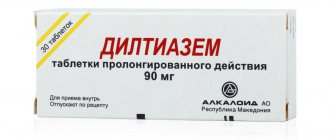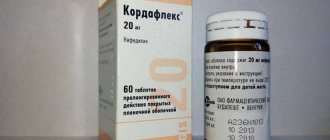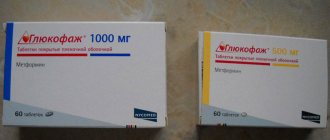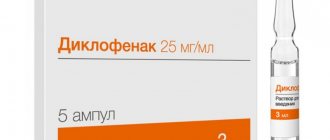Every year there are more and more people suffering from cardiac diseases. Heart pathology occurs in almost every person after fifty years. This disappointing trend has emerged due to the fact that modern society lives in a state of chronic stress. Of course, emotional experiences primarily affect the health of the cardiovascular system, which leads to a rapid increase in the incidence of nosological units related to cardiology. The most common disease is hypertension, because now it is impossible to meet a person who has not heard about it, or who has not even encountered the problem of high blood pressure.
The main danger of arterial hypertension is that even if a person’s well-being does not suffer from it, irreversible changes still occur in various organs and systems in the body. These disorders are invisible only up to a certain point, while the body is still able to compensate for the lost functions of these organs. However, when the stage of decompensation arrives, there is practically no way to help the person, despite all the modern advances in medicine. Therefore, treatment of hypertension must be done from the very moment it was first identified and diagnosed.
The modern pharmaceutical market offers us a wide variety of medications that can reduce blood pressure. One of the most studied and effective is the drug Felodipine, which is now widely used in cardiological practice.
Brief information about the drug
Release form
The drug Felodipine is produced in the form of tablets intended for oral administration.
The round tablets are coated with a thin film coating and colored yellow.
Each tablet is packaged in an individual blister cell. The contour package may contain 10.15 30 tablets.
Blisters are additionally packed in cardboard packs of 1, 2,3, 6 pieces. The kit includes instructions for using Felodipine.
Compound
The main active ingredient is felodipine. One tablet can contain 2.5, 5 or 10 mg of the substance.
Other components included in the drug:
- hydroxypropyl methylcellulose;
- calcium hydrogen phosphate;
- colloidal silicon dioxide;
- lactobiose;
- alginic acid salt;
- magnesium stearate;
- polyvinylpyrrolidone.
The composition of the film shell includes:
- hypromellose;
- polyethylene glycol 400 and 6000;
- food additive E104;
- food additive E172 yellow;
- titanium dioxide.
Felodipine packaging
pharmachologic effect
The drug has an antihypertensive and antianginal effect.
Manufacturer
The drug is produced by four different manufacturers:
- Zhejiang Supor Pharmaceuticals Co. Ltd. PRChina (China);
- Everlight Chemical Industrial Corporation (Taiwan);
- Nivedita Chemicals Pvt. Ltd (India);
- Kanonpharma production CJSC (Russia).
Terms and conditions of storage
It is recommended to store the drug out of the reach of children, in a dry place away from sunlight. Storage temperature should not exceed 25 degrees.
The shelf life of the medicine is 2 years from the date of manufacture. After the expiration date, the tablets cannot be used; they must be disposed of in accordance with sanitary standards.
Terms of sale
The drug is sold in pharmacies with a doctor's prescription.
Price of tablets
The cost of Felodipine tablets starts from 220 rubles.
Pharmacodynamics: how it affects blood pressure
The tablets belong to the pharmacological group of calcium antagonists and reduce blood pressure by blocking slow calcium channels. The drug effectively lowers blood pressure and reduces the likelihood of developing angina and ischemia.
The drug lowers peripheral vascular resistance and lowers blood pressure. The tablets reduce the area of dead heart cells that appear due to a heart attack. Taking the tablets protects against complications of reperfusion syndrome. The drug does not have a pronounced effect on the conduction system of the heart.
How calcium channel blockers work
Pharmacokinetics of the drug
Each tablet of the drug is covered with a thin film coating, which slows down the degree of breakdown of the tablet into components when it enters the stomach. This lengthens the absorption time and promotes uniform distribution of components in the blood plasma. The drug slowly releases the active components into the bloodstream throughout the day. Absorption occurs in the stomach, bioavailability is 15%. The connection with blood proteins is high and is about 99%.
Metabolism occurs in the liver. During the metabolic process, low-active metabolites are formed. The half-life is 24 hours. About 70% of metabolites are excreted unchanged through the kidneys, the remaining 30% are excreted through the intestines. With prolonged use there is no cumulative effect.
In old age and with liver failure, the concentration of felodipine increases. In renal failure and hemodialysis, the pharmacokinetics of the drug does not change.
The components of the drug penetrate the placental barrier and into breast milk.
Contraindications of the drug
The drug Felodipine has absolute and relative contraindications.
You should absolutely not take Felodipine if you have high blood pressure in the following cases:
- low blood pressure;
- pre-infarction condition;
- extreme degree of left ventricular failure;
- heart attack and the first month after myocardial infarction;
- aortic stenosis;
- decompensated chronic heart failure;
- period of bearing a child;
- breastfeeding period;
- children under 18 years of age;
- individual intolerance to components.
Felodipine should be prescribed with extreme caution for blood pressure when:
- kidney failure;
- liver failure;
- labile blood pressure;
- narrowing of the aortic mouth;
- heart failure caused by an attack.
In heart failure, felodipine is prescribed with caution.
Instructions for use and dosage
Felodipine is intended for oral administration. Tablets with a prolonged effect should be taken over a long course, which is determined by the attending physician according to indications. The tablets are taken whole, do not break, chew, dissolve the capsule in water, or divide into slices. Doctors recommend taking Felodipine for high blood pressure in the morning on an empty stomach.
The dosage and frequency of administration are determined by the attending physician according to indications individually for each patient.
Felodipine is prescribed as a course for high blood pressure. The initial daily dosage is 5 mg. Gradually, the doctor may increase the dose. The maximum daily dose is 10 mg. In old age or with impaired liver function, treatment should begin with 2.5 mg.
To treat angina pectoris, the doctor prescribes 5 mg of the drug. The maximum daily dose is 20 mg.
To treat arterial hypertension, the doctor may prescribe complex therapy, which includes several medications from different pharmacological groups. The blood pressure drug Felodipine can be combined with ACE inhibitors, beta-blockers, and diuretics. With combination therapy, the antihypertensive effect is enhanced, so dose adjustment by a specialist is required to prevent the development of hypotension.
In case of liver failure, it is necessary to take the drug in minimal dosages. In case of renal impairment, no dose adjustment is required.
The drug can be used strictly as prescribed by a doctor.
Reviews
On the Internet you can find a large number of reviews about Felodipine. But do not forget that first of all you should be guided by the doctor’s recommendations.
Doctors
- Ekaterina Mikhailovna, cardiologist, echocardiography specialist. Felodipine is a fairly good drug. During the entire period of my practical medical activity, there were practically no cases of intolerance to it. Of course, the fact that the risk of developing orthostatic collapse is minimal is captivating.
- Alexander Ivanovich, cardiologist, associate professor. I have seen complications with the use of Felodipine several times, but this in no way negates all the advantages of this drug. With its proper administration, rapid positive dynamics of the disease can be achieved.
Patients
- Olga, 62 years old. I have been using Felodipine against high blood pressure for more than six months now. Before this, I took Enalapril, but complications developed with it, but there were no problems with these tablets. One of the disadvantages is the high cost of the drug. It is also not always available in pharmacies.
- Polina, 56 years old. I am a hypertensive patient with extensive experience. Recently, I have been saving myself only with Felodipine, on which the pressure remains stable within 130-140 (and previously it jumped to 180). With the start of treatment, headaches and heart problems disappeared.
Manifestations of adverse reactions
Taking Felodipine for high blood pressure may cause unwanted reactions in the body. Main side effects: dizziness, headaches, flushing, rapid heartbeat, fatigue. These side effects are most often observed at the beginning of therapy and then disappear on their own.
Other undesirable reactions of the body from the work of internal organs and vital systems of the body:
- heart and blood vessels: hyperemia, swelling of the ankles, rapid heartbeat, increased heart rate, loss of consciousness, severe decrease in blood pressure, cardiac rhythm and conduction disturbances, cutaneous leukocytoclastic angiitis;
- nervous system: headaches, dizziness, sensitivity disorder;
- digestive organs: vomiting, abdominal pain syndrome, attacks of vomiting, proliferation of gum tissue, damage to the mucous membrane of the tongue, inflammation of the gums, increased activity of aminotransferases;
- musculoskeletal system: muscle pain, joint pain;
- allergic reactions: skin rashes, itching, nettle fever, Quincke's edema, photosensitivity;
- urinary system: polyuria;
- other reactions: loss of strength, erectile dysfunction, increased blood glucose, fever.
When taking Felodipine, one-time negative reactions of the body were noted, but the reason for their appearance has not been fully determined:
- swelling of the face;
- painful manifestations in the chest;
- decreased blood pressure;
- flu symptoms;
- syncope;
- heart attack;
- heart rhythm disturbance;
- angina pectoris;
- premature heart contractions;
- dry mouth;
- loose stools;
- bloating;
- anemia;
- gynecomastia;
- joint pain;
- back pain;
- painful sensations in the arms and legs;
- muscle pain;
- sleep disorders;
- increased irritability;
- depression;
- increased feeling of anxiety;
- dyspnea;
- inflammation of the mucous membrane of the pharynx and tonsils;
- inflammation of the bronchi;
- inflammation of the paranasal sinuses;
- blood from the nose;
- bruises;
- erythema;
- isolated cutaneous leukocytoclastic angiitis;
- decreased visual function;
- urinary disturbance;
- increased urination.
Taking Felodipine may cause joint pain
Felodipine-SZ extended-release tablets 10 mg 30 pcs.
Felodipine-SZ is a slow calcium channel blocker used to treat arterial hypertension and stable angina. Felodipine is a dihydropyridine derivative. The conductivity and contractility of vascular smooth muscle is inhibited by affecting the calcium channels of cell membranes. Due to its high selectivity for arteriole smooth muscle, felodipine in therapeutic doses does not have a negative inotropic effect on cardiac contractility or conduction. Felodipine relaxes the smooth muscles of the respiratory tract. Felodipine has been shown to have little effect on gastrointestinal motility. With long-term use, felodipine does not have any effect on patients with type 2 diabetes mellitus. When using felodipine for 6 months, no clinically significant effect was observed on the metabolic processes of glycosylated hemoglobin (HbA1c). Felodipine may also be prescribed to patients with reduced left ventricular function receiving standard therapy and to patients with asthma, diabetes mellitus, gout or hyperlipidemia. Hypotensive effect: a decrease in blood pressure when taking felodipine is due to a decrease in total peripheral vascular resistance. Felodipine effectively reduces blood pressure in patients with arterial hypertension both in the supine, sitting and standing positions, at rest and during physical activity. Since felodipine has no effect on venous smooth muscle or adrenergic vasomotor control, orthostatic hypotension does not occur. At the beginning of treatment, as a result of a decrease in blood pressure while taking felodipine, a temporary reflex increase in heart rate (HR) and cardiac output may be observed. An increase in heart rate is prevented by the simultaneous use of beta-blockers with felodipine. The effect of felodipine on blood pressure and peripheral vascular resistance correlates with the plasma concentration of felodipine. The therapeutic effect of the drug lasts for 24 hours. Treatment with felodipine leads to regression of left ventricular hypertrophy. Felodipine has natriuretic and diuretic effects and does not have a kaliuretic effect. When taking felodipine, tubular reabsorption of sodium and water decreases, which explains the absence of salt and fluid retention in the body. Felodipine reduces vascular resistance in the kidneys and increases renal perfusion. Felodipine has no effect on glomerular filtration and albumin excretion. For the treatment of arterial hypertension, Felodipine-SZ can be used in monotherapy or in combination with other antihypertensive drugs, such as beta-blockers, diuretics or angiotensin-converting enzyme (ACE) inhibitors. Anti-ischemic effect: The use of felodipine leads to an improvement in blood supply to the myocardium due to dilation of the coronary vessels. Reducing the load on the heart is achieved by reducing total peripheral vascular resistance, which leads to a decrease in myocardial oxygen demand. Felodipine relieves spasm of coronary vessels. Felodipine improves contractility and reduces the frequency of angina attacks in patients with stable angina pectoris. At the beginning of therapy, a temporary increase in heart rate may be observed, which can be stopped by the administration of β-blockers. The effect occurs after 2 hours and lasts for 24 hours. For the treatment of stable angina, felodipine can be used in combination with β-blockers or in monotherapy.
Drug overdose
In case of an overdose of the drug, the pressure drops sharply to critical levels, and the sinus rhythm is additionally disrupted.
If blood pressure drops sharply to critical levels, it is necessary to provide first aid to the patient and call an ambulance.
The patient is placed horizontally, with his legs slightly elevated. If sinus rhythm is disturbed, it is necessary to give the patient an injection of atropine into a vein at a dosage of 0.5-1 mg.
If the patient's condition remains severe, it is necessary to put in a drip with glucose, dextran, sodium chloride to increase the volume of circulating blood.
Subsequently, the doctor prescribes symptomatic therapy to the patient.
Felodipin
Special conditions
At the beginning of therapy or when the dose is increased, blood on the skin of the face, headache, palpitations, dizziness and weakness may occur. Usually these reactions are temporary and go away on their own. Particular caution is required in the following conditions: aortic and mitral stenosis, impaired liver function, severe renal failure (creatinine clearance <30 ml/min), heart failure after acute myocardial infarction. Arterial hypotension, which in predisposed patients can cause myocardial ischemia. The combined use of drugs that induce the CYP3A4 isoenzyme leads to a significant decrease in the concentration of felodipine in the blood plasma and insufficient therapeutic effect from taking the drug (see section “Interaction with other drugs”). Co-administration of such drugs should be avoided. The combined use of drugs that inhibit the CYP3A4 isoenzyme leads to a significant increase in the concentration of felodipine in the blood plasma, and therefore such combinations should be avoided. Avoid taking the drug with grapefruit juice due to a significant increase in the concentration of felodipine in the blood plasma. It is necessary to carefully observe oral hygiene (see section “Side effects”). •Effect on the ability to drive vehicles and operate machinery When driving vehicles or other mechanisms that require increased attention, the possibility of developing dizziness and weakness while taking the drug should be taken into account. At the beginning of therapy or during the period of increasing the dose, patients should refrain from engaging in hazardous activities that require concentration and speed of psychomotor reactions. Overdose Symptoms: I -1 In case of overdose, symptoms of intoxication appear 12-16 hours after taking the drug, severe symptoms can occur several days after taking the drug. The following symptoms may be observed: bradycardia (sometimes tachycardia), a pronounced decrease in blood pressure, AV block of the 1st - 3rd degree, ventricular extrasystole, atrioventricular dissociation, asystole, ventricular fibrillation; headache, dizziness, impaired consciousness (or coma), convulsions; shortness of breath, pulmonary edema (non-cardiogenic) and apnea; in adults, respiratory distress syndrome may develop; acidosis, hypokalemia, hyperglycemia, possibly hypocalcemia; "flushes" of blood to the skin of the face, hypothermia; nausea and vomiting. Treatment: The administration of activated carbon, and, if necessary, gastric lavage, is in some cases effective even at the late stage of an overdose. A specific antidote is calcium preparations. IMPORTANT! Atropine (0.25-0.5 mg IV for adults, 10-20 mcg/kg for children) should be given before gastric lavage (due to the risk of vagus nerve stimulation). ECG monitoring. If necessary, ensure airway patency and adequate ventilation of the lungs. Correction of the acid-base status and electrolytes of blood serum is indicated. In case of bradycardia and AV block, atropine 0.5-1 mg IV is prescribed for adults (20-50 mcg/kg for children), the administration is repeated if necessary, or isoprenaline 0.05-0.1 mcg/kg/min is initially administered. In case of acute intoxication at an early stage, it may be necessary to install an artificial pacemaker. A pronounced decrease in blood pressure is corrected with intravenous fluid administration; for adults, calcium gluconate solution (9 mg calcium/ml) 20–30 ml is administered intravenously over 5 minutes or as an infusion (3–5 mg calcium/kg for children), if necessary. repeat the administration at the same dose. If necessary, norepinephrine (norepinephrine) or dopamine is infused. In case of acute intoxication, glucagon may be prescribed. Cardiac arrest due to an overdose may require resuscitation for several hours. For convulsions, diazepam is prescribed. Other symptomatic treatment is carried out.
Important Notes
Special categories of patients
Taking Felodipine rarely leads to hypotension and coronary heart disease. Patients with a predisposition to pathology are at risk. In case of a repeated heart attack, there is no need to prescribe Felodipine tablets.
The drug does not affect lipid metabolism and glucose levels.
The drug is well accepted by patients and rarely leads to serious adverse reactions. The drug effectively lowers blood pressure in patients of different ages, gender, after lung transplantation, with bronchial asthma, pulmonary disorders, gout, diabetes, hyperlipoproteinemia.
Driving a car
The drug can cause dizziness, lethargy, and loss of strength, so patients are advised to refrain from driving and doing work that requires concentration, especially in the first days of taking the medication.
You should be careful when driving while taking this medication.
Kidney diseases
Patients with renal impairment should take the drug with extreme caution.
Liver diseases
Patients who have problems with the liver should take the medicine with extreme caution.
At what pressure should you take Felodipine?
Felodipine should only be used for high blood pressure. Blood pressure figures exceeding 140/95 millimeters of mercury are considered high. Pressure 130-135/95 mmHg. is already the first harbinger of cardiac or vascular pathology, although it falls within the boundaries of the relative norm.
Important!
Remember that if you once find high blood pressure during measurement, this does not mean that you are sick. The diagnosis of hypertension is made only after detection of pressure figures above 139/94 millimeters of mercury twice (with an interval of several days).
In this case, you need to measure the pressure on both hands with a tonometer (alternately), strictly observing all the rules for performing this manipulation. And in some cases, the doctor may consider that there are indications for determining blood pressure numbers in the legs (the cuff is placed on the middle part of the thigh).
Drug compatibility
Felodipine tablets cannot be taken simultaneously with certain other medications due to pharmacological incompatibility:
- Digoxin increases the total content of felodipine in the blood, but no dose adjustment is required;
- Itraconazole, Ketoconazole, Cimetidine, Erythromycin affect the metabolism of Felodipine, increase the total content of metabolites in the blood;
- barbituric acid derivatives, Carbamazepine, Rifampicin, Phenytoin reduce the level of Felodipine in the blood;
- Verapamil, beta-blockers, tricyclics, diuretics increase the hypotensive effect;
- Cyclosporine doubles the maximum concentration of felodipine in the blood.
Nonsteroidal anti-inflammatory drugs do not affect the antihypertensive effect of Felodipine; dose adjustment is not required. The drug can be used simultaneously with Warfarin and other drugs that bind to blood plasma.
Doctors do not recommend drinking grapefruit juice or eating fresh grapefruits during Felodipine therapy.
It is not recommended to eat grapefruit while taking Felodipine.
Analogs
A substitute for Felodipine can be selected from the same pharmacological group, or you can use a drug with a radically different mechanism of action.
There are also tablets with the same composition, but produced by different manufacturers. Such analogues cannot be used if there is intolerance to the main active ingredient.
Felodip and Felodipin: what is the difference
Both of these drugs have the same active ingredient, so their effects are absolutely identical. The only differences are in the manufacturers and the cost of the drugs.
List of Russian analogues of this pharmacological drug
- Amlorus.
- Amlodipine.
- Felodipine c3.
- Felotenz Retard.





